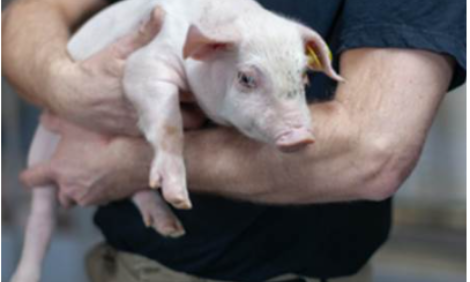



The effect of sow housing systems on longevity, performance and behavior
By Todd See - Researchers from the University of Minnesota reported results from studies that evaluated the effect of sow housing systems on longevity, performance and behavior at the recent Midwestern Meeting of the American Society of Animal Science held in Des Moines, IA.
 Dr Todd See
Dr Todd SeeSwine Genetics Specialist North Carolina State University |
In the first study they compared the longevity and culling of gilts and sows housed in conventional gestation stalls with those group housed in pens with electronic sow feeders. Both systems had fully slatted floors and 87 gilts and 243 sows were housed in pens and 168 gilts and 232 sows in crates over the three-year study period. There was no difference observed in the proportion of culling and mortality in gilts in the two housing systems.
However, for sows the proportion culled was significantly higher in stalls and the proportion of mortality was higher in the pen housing. The most common removal reasons after reproductive performance in both housing systems were locomotor (downer, lameness, and joint infection). The proportion of females removed for locomotor problems was significantly higher in pens with electronic sow feeding.
In a second study farrowing performance from March through October 2004 was compared for sows of parity 2 to 9 housed during gestation in crates (n = 334) and sows housed during gestation in pens with electronic feeder (n = 333). Gestation crates were 14.3 ft2 and each pen housed 50 to 60 sows with 20.3 ft2 per sow. As shown in Table 1, pen housed sows had shorter gestation lengths, were heavier at weaning, and had heavier litters at birth and weaning.
Pen housed sows took longer to return to estrus can sows housed in gestation crates. However, a higher percentage of crated sows had a delayed return to estrus following weaning. There was no significant difference between housing systems for pigs born alive or pigs weaned.
| Table 1. Farrowing performance of sows housed in gestation crates vs. pens with electronic sow feeders. | |||||
Item |
Pen |
SE |
Crate |
SE |
P value |
Gestation length, d |
116.0 |
0.1 |
116.6 |
0.1 |
<0.001 |
Weaning weight, lb |
509.3 |
3.1 |
476.7 |
2.6 |
<0.001 |
Number born alive |
10.3 |
0.2 |
10.5 |
0.2 |
NS |
Litter birth weight, lb |
36.4 |
0.4 |
35.0 |
0.4 |
<0.05 |
Number weaned |
9.4 |
0.2 |
9.6 |
0.2 |
NS |
Litter wean weight, lb |
134.0 |
1.3 |
129.4 |
1.3 |
<0.01 |
Days to estrus < 10 d |
5.1 |
0.05 |
4.9 |
0.05 |
<0.001 |
% Delayed estrus, > 10 d |
3.0 |
0.9 |
6.3 |
1.3 |
<0.05 |
| SE = standard error NS = not signifcant |
|||||
These studies, when taken together, suggest that in this production setting the pen gestation combined with electronic sow feeders keeps sows in better condition for farrowing, resulting in larger pigs born and weaned. However, it is of concern that mortality was higher and more females were culled from the pen gestation system for downer, lameness and joint infection problems.
Source: North Carolina State University Swine Extension - April 2005









